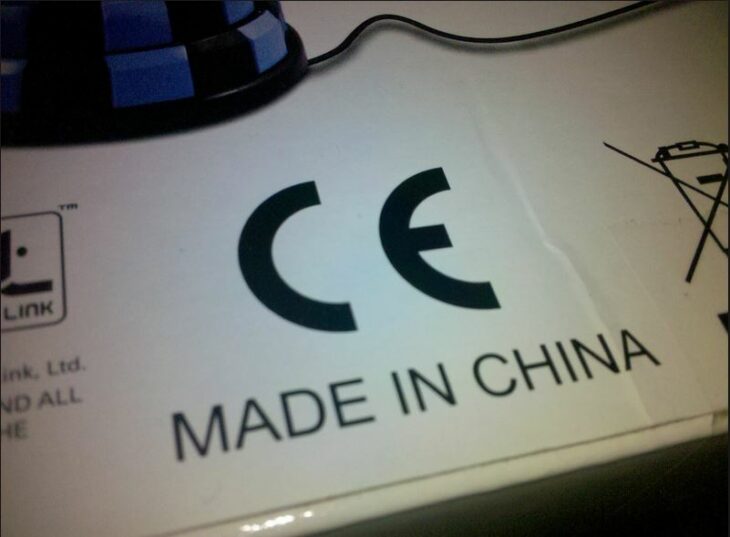Podcast: Play in new window | Embed
Tech News & Commentary
Terrance in Anchorage, Alaska asked: “I would really love to find a phone that is not made in China with a battery that is not made in China, that uses something other than Windows, Apple OS, or Android. Is there any such phone? I found a phone that was only available in Europe that uses Ubuntu. I was wondering, why isn’t it available here?”
The real answers as to why the Ubuntu phone is not available here, is because there’s virtually no interest in the phone anywhere! Even in Europe they barely sell, and that’s a fully unlocked phone for under $200.
The truth is that the phone’s specs were underwhelming even when it was announced a few years ago, and they’re even worse now, and the OS itself may be great, but users are basically sentencing themselves to owning a fancier feature phone, since no one but themselves is going to bother adapting their apps to yet another uninteresting platform.
 Now, as for phones not made in China and not running iOS, Android or Windows… the toughest part will be the OS, there are some phones that are still not always made in China.
Now, as for phones not made in China and not running iOS, Android or Windows… the toughest part will be the OS, there are some phones that are still not always made in China.
The problem is that as far as manufacturers are concerned phones are made where they’re made and no one cares, so you may get a Brazilian iPhone (we’ve heard of Foxcomm factories setting up there), or a Korean Samsung Note 4 (they have factories actually set up in the DMZ!), but for the most part you get what you get and volume and odds alone make it far more likely for your phone to come out of China.
If you’re really set on getting a phone that won’t come from China and won’t use any mainstream OS though, your options are basically this: a few, but no all Blackberries, and even Blackberry has largely moved all manufacturing out of Canada, and getting a non-chinese battery is gonna be next to impossible.
We live in a globalized world, you may have to surrender and accept that we have largely chosen to use a workforce in China that is treated very nearly as slaves, rather than to put up with higher prices for our products.
For more information tune in to Hour 3 of our podcast.
“Into Gaming Update” Weekly Feature with Mark Lautenschlager
Steven in Fairbanks, Alaska listens on NewsRadio 970 KFBX and is calling via the FREE “Into Tomorrow” App asked: “I’m wondering what you guys would recommend for a cell phone signal booster. We live off the grid, so it would have to be something of lower wattage.”
In terms of signal boosters– going online to find one may be your best bet because they tend to be more affordable, and getting a high-quality one is probably really important in your case because you are living off the grid. Wilson Electronics offers a few signal boosters that run a bit high in price, but may be totally worth your time.
The Wilson Electronics DT 4G for a small home or office is actually listed as a best-selling item on Amazon. It will work with all major cell-phone carriers and comes with an instructional video for smooth and easy setup. Installation can be tricky, and requires users to be meticulous with placement of an inside and outside antenna– but with a 30-day money back guarantee PLUS with that instructional video … how can you go wrong? This signal booster runs about $330 on Amazon.
If you are looking for something a bit less pricey, zBoost also offers a few signal boosters– two of which are among the top five best-sellers on Amazon. The zBoost ZB545 SOHO signal booster is listed as the #1 best selling signal booster on the entire site and comes in at various prices depending on the square footage of your home.
For example, at 750 square feet, it will only cost $204 and at 10,000 square feet it will cost $330– the same price as the Wilson Electronics one specialized for small homes and offices.
We’re not sure what carrier is providing your service, but you also might want to consider heading over to their nearest store OR website and checking out what signal boosters THEY have.
The last thing you’d want is to purchase a signal booster that doesn’t work for your phone, so be safe and check out specifics on all these products before jumping the gun.
And as for “living off the grid,” we’re not sure what that means regarding your power source. If you mean that you run on solar or wind power with batteries for storage, then you’ll be pleased to know that these kinds of devices don’t draw an enormous amount of power. Like any electronics, it’s modest. Running a toaster for a few minutes is probably the same as a full day of the signal booster.
For more information, tune in to Hour 3 of our podcast.
Bernadette asked: “Please advise me on a radio that picks up am stations at night without much static or fading. I do not have internet service, and I need it to be under 200.00.. thank you.”
There are radios that advertise improved reception on the AM radio bands, but you can get just as good a result, most of the time, with an improved AM antenna or some simple radio position tips.
The $85 C Crane CCRadio-EP features a Twin Coil Ferrite antenna that is adjustable for maximum sensitivity. Furthermore, it allows a connection to an external antenna so you can get even better reception.
Combine that with something like the CCRadio-EP and you are probably as good as you’re going to get for nighttime AM radio reception.
For more information, tune in to Hour 3 of our podcast.
Guest Segment:
Kannyn MacRae, VP of Product Development & Mktg – TYLT
Wireless charging and portable power solutions
“IFA History Feature” brought to you by Messe-Berlin
To bring color to the TV, new technologies had to be invented. The German Werner Flechsig in 1938 got a first patent for a stripe mask, separating red, green and blue with filters. That was the basis for color tubes, but it came too early. Nine years later in 1947, after World War 2, RCA developed a first prototype with such a shadow mask, the screen was no bigger than a postcard. In 1954, finally the market started in the United States with a round tube about 22 inches. BBC in the UK and Russian television began trials with color television. IFA was, of course, the showcase for these innovations as well.
Marty in Winchester, Tennessee listens on SuperTalk WTN 99.7 asked: “I was looking for an app for an Android for an anti-virus scan to help my phone if there’s a virus on it.”
Unless it’s rooted, you probably don’t need any kind of antivirus for your Android device, they don’t work the same way computers do and can’t just infect other files or apps outside of their small domains.
Having said that, just about everyone from AVG, to Avast, to Bitdefender, to Kaspersky, to MalwareBytes, to really just about everyone else, has tools available.
Some like Avast offer special tools for users with rooted devices, to try to limit the risk of having apps that can suddenly escape their sandboxes, others basically run a scan of what’s installed and give generic advice as to what apps can be a “privacy risk” by storing cookies or uploading usage information.
Just keep in mind before you worry too much about an antivirus that Google scans every app before they’re uploaded to the Play store, the only problem used to be sideloaded apps that you download from other sources and copy onto the phone yourself, however, since Android 4.2, those are ALSO scanned when you add them to your phone.
If for whatever reason an app evaded Google’s scans and they find out later that it was malicious, they can (and have in the past) remotely uninstall it from your device.
Antiviruses on non-rooted phones are basically placebos to make you feel safer. They do a few semi-useful thing, like letting you know if a website seems fishy, but they’re not very useful. If your phone is rooted, then focus mainly on antivirus apps that specifically offer features for rooted phones.
For more information, tune in to Hour 3 of our podcast.
Spud in California listens on KTIP 1450 AM “Talk is Power!” asked: “Interested in a large screen camera/phone arrangement”
Do you mean cameraphone with a large screen? Cause pretty much any modern phone will take very nice pictures. You can probably just settle for the phablet of your choice, be it the Galaxy Note 4, the iPhone 6+, or any of the many, many other ones and they will all function as a great point and shoot camera.
A lot of phablets even have pretty high megapixel counts if you want to take big pictures, the Note 4 has a 16MP camera for example, the LG G3 has a 13MP camera, those should give you plenty of pictures for large prints.
You could also look at a smart camera, which would pretty much have to be one of the cameras on the Samsung Smart Camera line up. Those are fully featured, large zoom cameras that run on Android and can do just about everything a smartphone can.
For more information, tune in to Hour 3 of our podcast.
If you have any questions about any of this week’s show info, please email us here.
This Week’s Prizes for Our Listeners
TYLT: Car Charger RIBBN Cables – These cables rapidly charge 2 Smartphones or 2 Tablets simultaneously.
Monster Products: DNA Pro 2.0 High powered Over-ear headphones
MOTA: 10-foot lightning cable for Apple Devices and 3-port USB Car Chargers
Verykool: S5015 Spark II Smartphone – Unlocked GSM phone with Android OS and front facing flash – perfect for selfies!
Kensington: KP400 – Switchable USB and Bluetooth Keyboard


